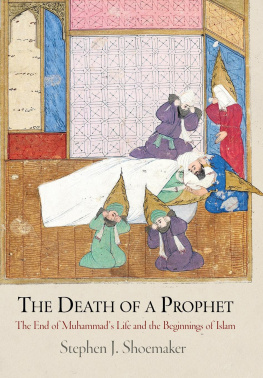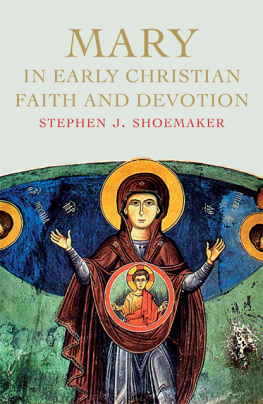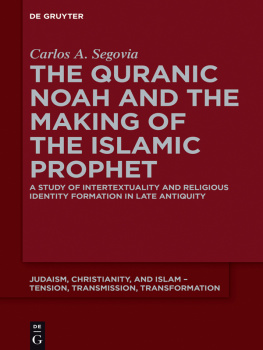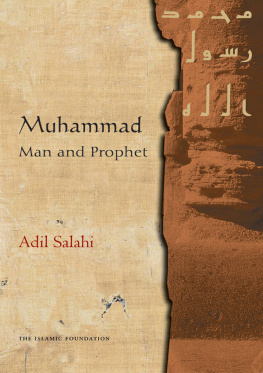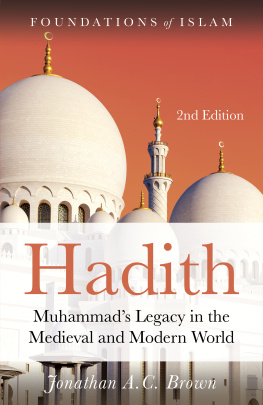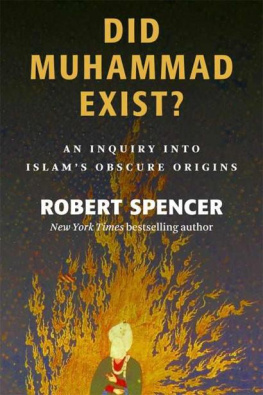Contents
Page List
Guide

The Death of a Prophet
DIVINATIONS: REREADING LATE ANCIENT RELIGION
Series Editors
Daniel Boyarin, Virginia Burrus, Derek Krueger
A complete list of books in the series is available from the publisher.
The Death of a Prophet
The End of Muhammads Life and the Beginnings of Islam
Stephen J. Shoemaker

UNIVERSITY OF PENNSYLVANIA PRESS
PHILADELPHIA
Copyright 2012 University of Pennsylvania Press
All rights reserved. Except for brief quotations used for purposes of review or scholarly citation, none of this book may be reproduced in any form by any means without written permission from the publisher.
Published by
University of Pennsylvania Press
Philadelphia, Pennsylvania 19104-4112
www.upenn.edu/pennpress
Printed in the United States of America on acid-free paper
2 4 6 8 10 9 7 5 3 1
Library of Congress Cataloging-in-Publication Data
Shoemaker, Stephen J., 1968
The death of a prophet : the end of Muhammads life and the beginnings of Islam / Stephen J. Shoemaker. 1st ed.
p. cm. (Divinations : rereading late ancient religion)
Includes bibliographical references and index.
ISBN 978-0-8122-4356-7 (hardcover : alk. paper)
1. IslamHistory. 2. IslamHistoriography. 3. Muhammad, Prophet, d. 632. I. Title.
BP55.S46 2002
297.635dc23
2011016426
For Melissa
CONTENTS
INTRODUCTION
The publication of Patricia Crone and Michael Cooks controversial study Hagarism in 1977 unquestionably marks a watershed in the study of religious culture in the early medieval Near East, even if its significance has occasionally been underestimated by other specialists in this field.
There are, it must be admitted, some considerable and undeniable flaws in Hagarisms reinterpretation of formative Islam, as even its most sympathetic readers have often acknowledged. Most significantly, Hagarism has been rightly criticized for its occasionally uncritical use of non-Islamic sources in reconstructing the origins of Islam. Undoubtedly, Wansbroughs question is intended as rhetorical and meant to impugn the value of non-Islamic sources for understanding earliest Islam. Nonetheless, I think that the most honest and accurate answer to this question is in fact, possibly. While such information perhaps cannot be freely extracted from these sources, when analyzed with some care they may potentially yield historically valuable information concerning the beginnings of Islam
The imperfections of Hagarism should not lead us to discount completely the important insights that both this study and its approach have to offer. But this recognition does not somehow make non-Islamic witnesses to the religious history of the seventh and eighth centuries any less valuable as a whole than the early Islamic sources, and on particular points they may possibly report more reliably than the Islamic tradition, as this study will argue. Almost all the documentary resources for understanding the formative period of Islam, including even the Qurn, are highly problematic from a religious historians viewpoint: these sources are frequently overwhelmed and controlled by a master narrative of sacred history, as well as being influenced by the social, political, and theological concerns of the particular groups that produced them. But such conditions do not present an altogether uncommon or impossible circumstance.
There are ways of extracting historically credible data from such contaminated repositories. We must deploy methods capable of identifying different types of bias and excavating information from these sources, along the lines of those techniques used to reconstruct the historical Jesus from the highly theologized narratives of the Christian gospels. This endeavor will not yield, to be sure, history wie es eigentlich gewesen, but this was always a hyper-modern fantasy in any case.
Rather than pursuing one of the many new issues that undoubtedly await exploration, the present study will return to what was surely one of Hagarisms most startling revelations: its identification of widespread reports from seventh- and eighth-century writers that Muhammad was still alive and leading the Islamic community as his followers began their invasion of the Roman Near East. This indication is strikingly at odds with the traditional account of Muhammads death before the Near Eastern conquest at Medina in 632, first recorded in the earliest Islamic biographies of the mid-eighth and ninth centuries. With so many unanswered questions still to pursue, one might rightly question the return to an issue raised now already over thirty years ago. There are, however, several reasons for doing so. In the first place, Crone and Cook merely note the existence of this discrepancy in the sources, gathering many of the most significant references together in an endnote. Instead of carefully evaluating the historical significance of these witnesses both individually and collectively, they conclude their list of references with only the remark: The convergence is impressive. Indeed it is, but can we say something more than this? Might a critical analysis of the sources give us some sense of how much historical weight they can bear, both individually and collectively? Is it possible that, even if Muhammad did not in fact lead the Islamic conquest of Palestine, this tradition might reveal something about the nature of formative Islam?
In all fairness, we are presently much better equipped to pose such questions, in large part due to the excellent work of Hoyland, most notably in his Seeing Islam as Others Saw It. Not only has Hoyland produced an outstanding catalogue of the many references to early Islam made in non-Islamic sources,
These are sound principles for assessing the relative worth of the various non-Islamic witnesses to the earliest history of Islam, to which I would add one further: the criterion of multiple, independent attestation, one of the oldest and most fundamental principles of modern biblical criticism and particularly important for studies of the historical Jesus. As biblical scholars have long recognized, a higher degree of historical probability inheres in observations attested by several independent sources, since this pattern makes it highly unlikely that a particular writer has invented a given report. When a particular tradition from the non-Islamic sources meets all of these criteria, there is a significant probability that such a report reflects genuine information about the formative period of Islam. While it cannot be said with any certainty that these witnesses disclose what really happened, such reports present high-quality information that derives from the period in question. Nevertheless, despite their exceptional value, these testimonies should not simply be taken at face value, and they need to be compared critically with related traditions from the earliest Islamic sources.
When there is sharp disagreement with the canonical narratives of Islamic origins, as is the case with the circumstances of Muhammads death, one must also subject the relevant Islamic sources to a similar scrutiny, in order to determine if the difference reflects the influence of later theological, political, literary, or other interests within the Islamic tradition. This process will involve bringing the full toolkit of historical criticism to bear on the traditions of the Qurn and the earliest narratives of Islamic origins, including elements of form criticism, tradition criticism,

